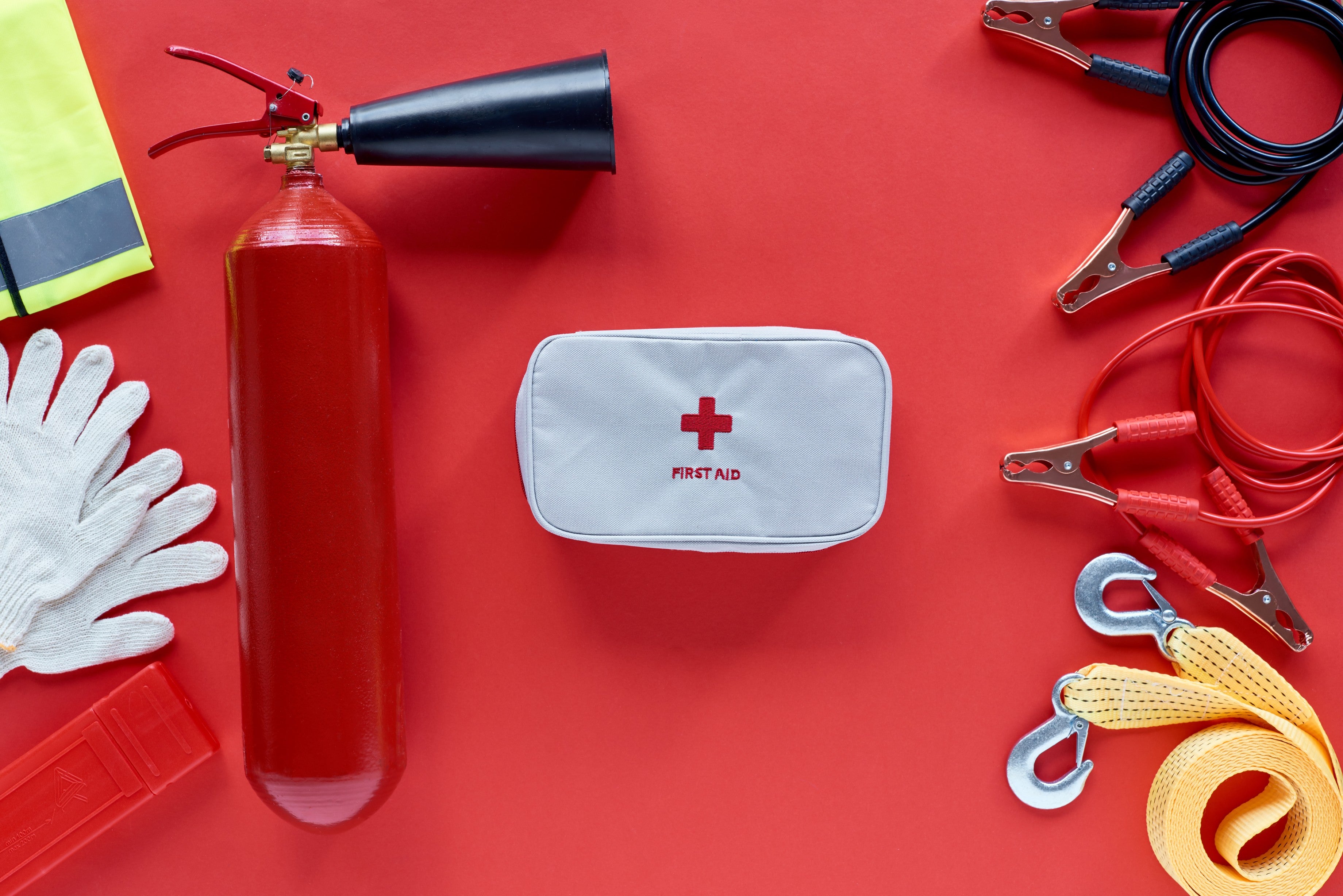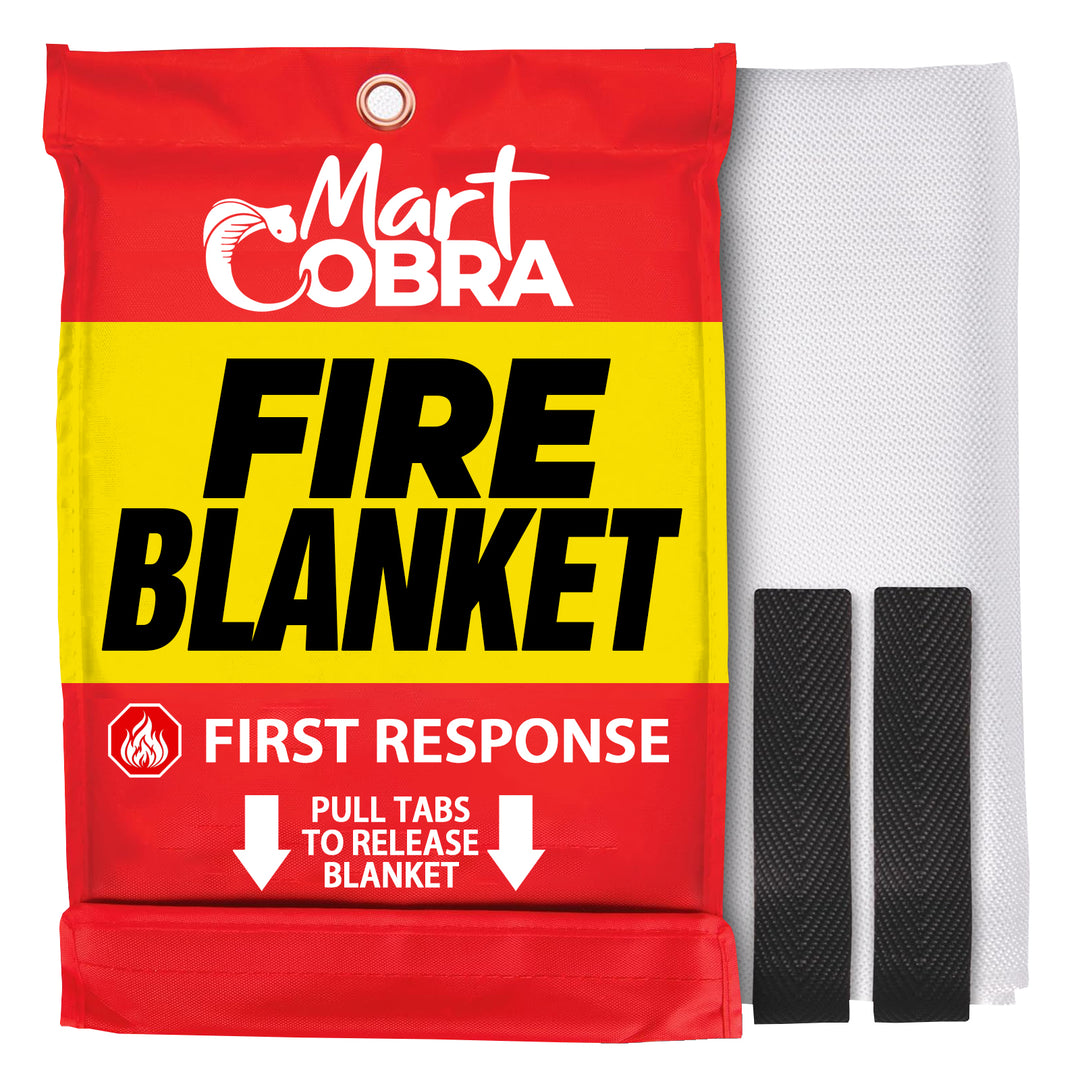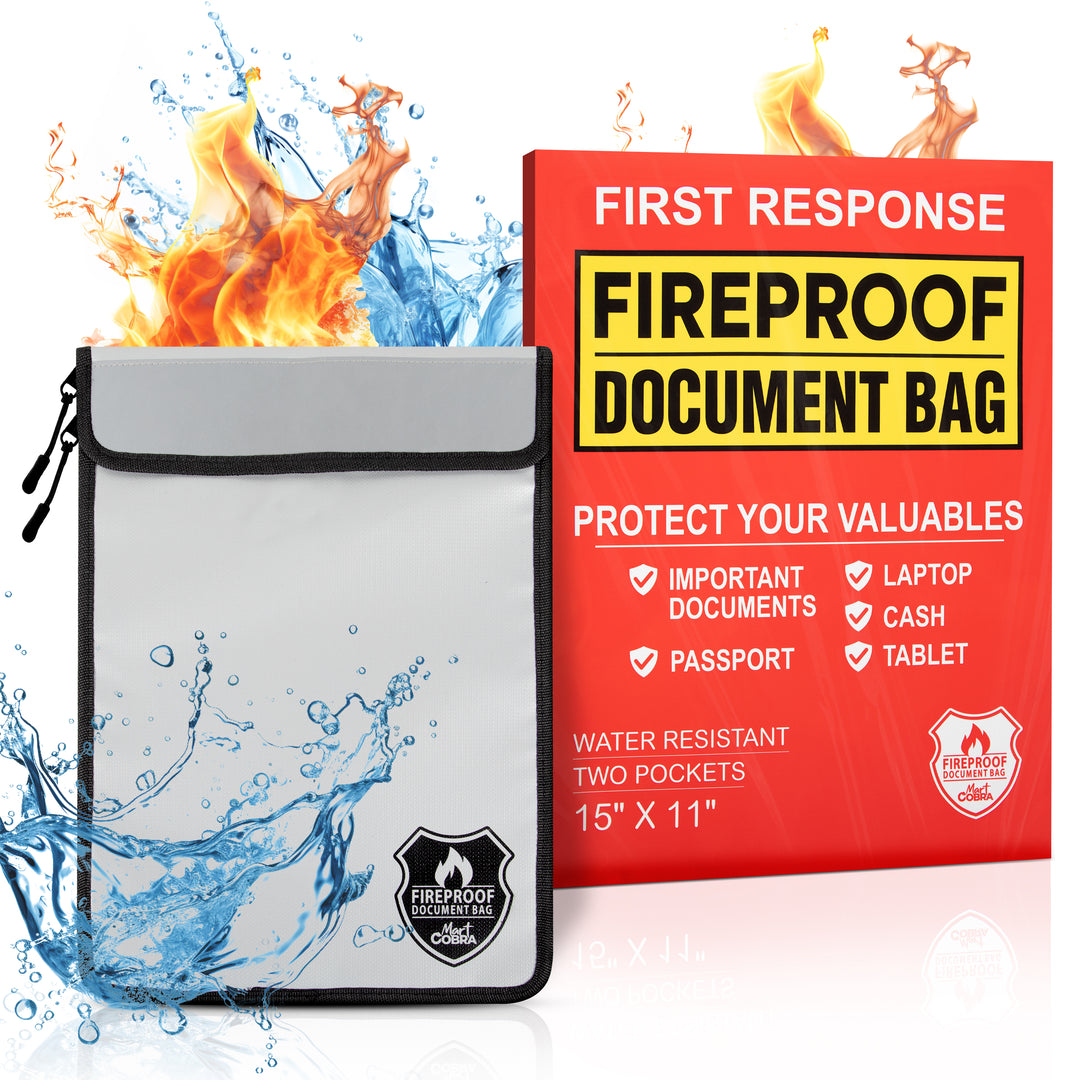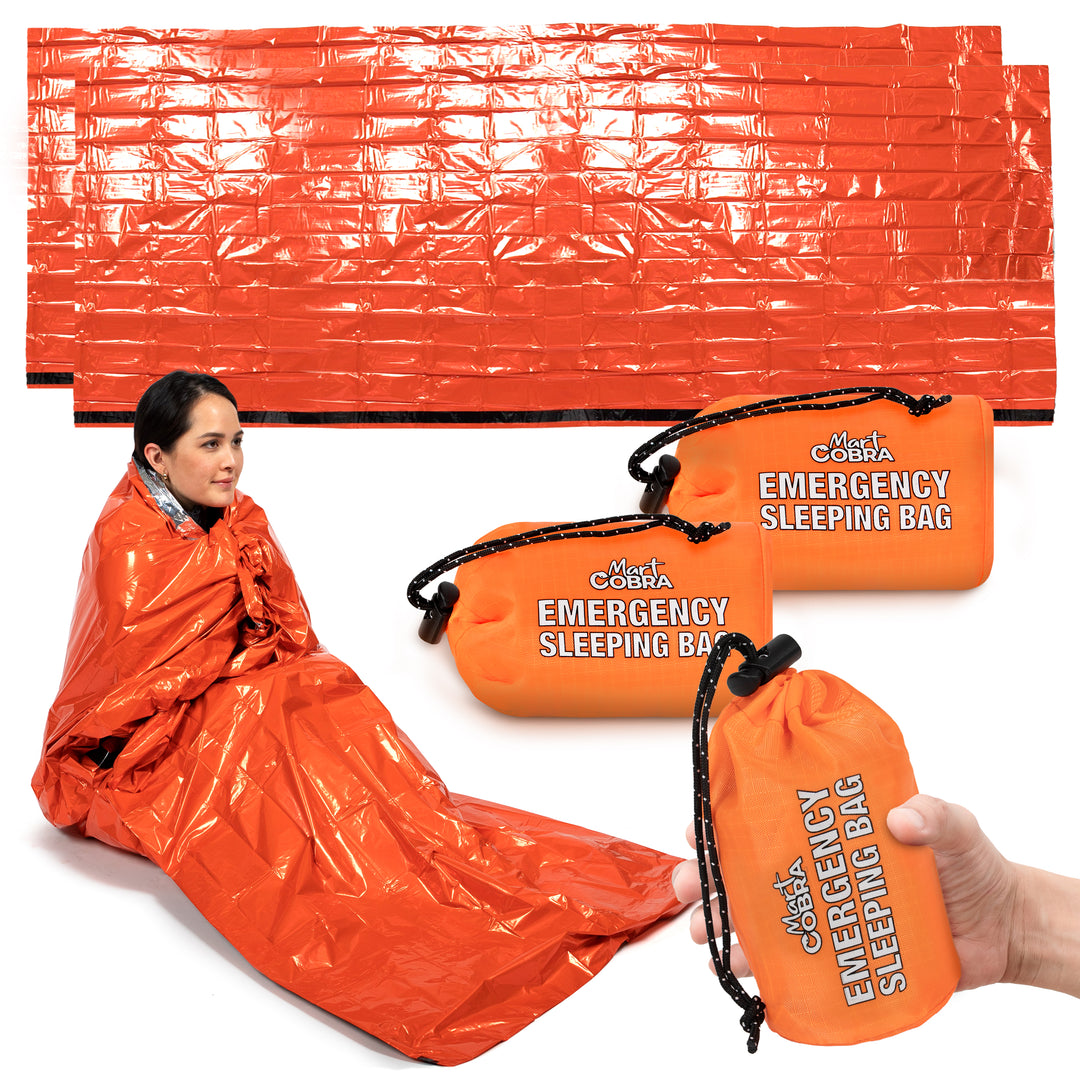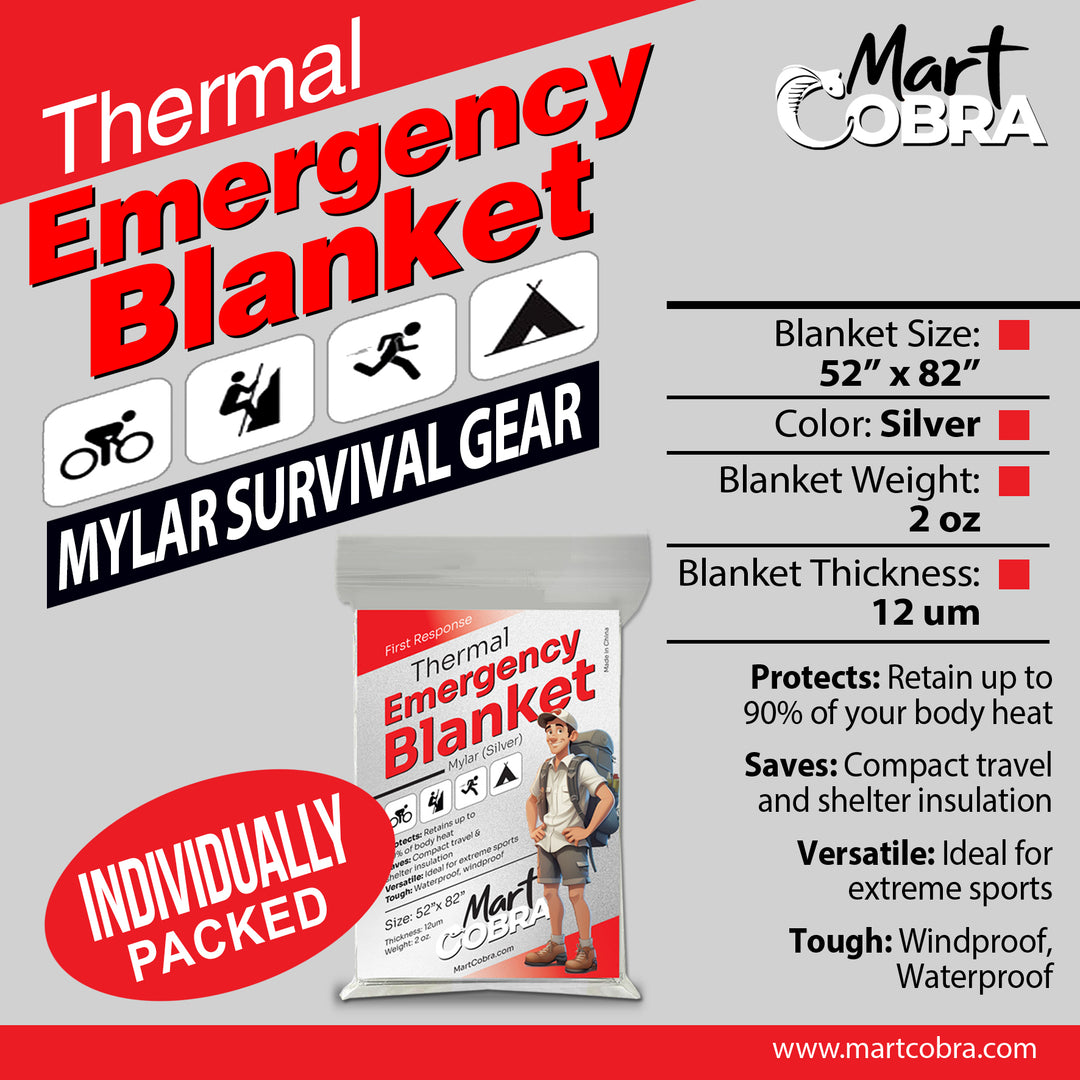Imagine driving on a secluded stretch of road when your car suddenly sputters and dies. It's late and dark, and you're miles from help. This scenario, while unsettling, underscores the critical importance of having a well-stocked car emergency kit.
Road emergencies are unpredictable, but being prepared can make all the difference in safety, survival, and the speed at which you recover from an unforeseen event.
Roadside Emergency Kit Essentials
A car emergency kit, also known as a roadside emergency kit, is a collection of essential tools and supplies for addressing common roadside issues and emergencies. From a flat tire to a dead battery or minor injuries, being prepared means you can handle such situations with confidence.
Detailed Breakdown of Each Item in Your Car Emergency Kit
Let's review the ten must-have items for your car emergency kit and how each one can prove invaluable in a pinch:
1. First Aid Kit
You hope to never use first aid supplies, but should the occasion arise, you'll be thankful to have them on hand.
Afirst aid kit is indispensable in any car emergency kit due to its vital role in providing immediate assistance in the event of minor accidents or injuries. When on the road, immediate medical assistance might be inaccessible or delayed, making a first aid kit essential for treating cuts, abrasions, burns, or other injuries on the spot.
Equipping yourself with a comprehensive first aid kit containing essentials like antiseptic wipes, various bandages, gauze, adhesive tape, scissors, and pain relief medicationallows for efficient handling of unforeseen medical emergencies until professional help is available.Moreover, keeping copies of prescriptions for any existing medical conditions in your vehicle can help medical personnel provide prompt and accurate assistance.

2. Jumper Cables
A dead car battery is one of the most common issues drivers face, especially in extreme temperatures, after leaving lights on, or due to the battery's age.
Jumper Cables are crucial in such situations, allowing you to jump-start your car with the assistance of another vehicle. Without jumper cables, you may find yourself stranded and waiting for roadside assistance, which could take hours, depending on your location.
Keeping a set of high-quality jumper cables in your emergency kit ensures that you can quickly get your car running again with the help of a good Samaritan. It’s a simple tool that can save you from prolonged inconvenience and help you maintain your schedule without significant delays.
3. A Spare Tire, Jack, and Lug Wrench
Including a spare tire,jack, andlug wrench in your car emergency kits is essential for addressing one of the most common roadside emergencies—a flat tire.
Roads are littered with sharp objects that can puncture your tire and leave you stranded. Equipping your vehicle with a functional spare tire and the essential tools for its installation—a jack to lift the car and a lug wrench to remove the tire—can transform what might have been a disastrous situation into a mere inconvenience.
Being equipped to handle flat tires on your own provides a sense of confidence and autonomy in travel, reducing stress and potential delays. This self-reliance is particularly crucial in remote areas where assistance may not be readily available.
4. Flashlight and Extra Batteries
A flashlight is essential for any emergency car kit. When stranded at night or in dimly lit conditions, visibility becomes paramount for your safety and simple tasks like reading maps, changing a tire, or signaling for help. A reliable flashlight can be a beacon in the darkness, guiding you through repairs or illuminating your surroundings to avoid hazards.
Equally important are spare batteries to ensure that your flashlight remains operational when you need it most.
You can also use flashlights to signal distress to passing vehicles or rescuers to increase your chances of being seen and helped. Therefore, always ensure your roadside emergency kits include a durable flashlight and a set of spare batteries to keep you prepared for any situation that arises on the road.
5. A Multi-Tool and Duct Tape
A multi-tool is a versatile and compact tool that can help in many emergencies. It usually contains pliers, screwdrivers, blades, and other useful tools for minor car repairs or adjustments. Whether it's fixing loose parts or cutting through materials, a multi-tool can prove invaluable in an emergency.
Accompanying the multi-tool, duct tape is another must-have tool in your car emergency kit. This versatile adhesive can help hold things together temporarily or make improvised repairs to critical vehicle components. Duct tape is also useful for many other emergencies, such as repairing torn upholstery or securing a broken window until you can reach a repair shop.

6. A Fire Blanket and Emergency Blanket
Keeping afire blanket in your car emergency kit is a precaution that should not be overlooked. In the rare instance of a smallfire, whether it starts in the engine compartment or from an external source, a fire blanket can be a critical tool forextinguishing flames quickly and safely.
A fire blanket is specifically designed to smother fires, cutting off the oxygen supply and preventing the fire from spreading. This can be particularly useful forgrease and electrical fires that cannot be put out with water.
A fire blanket can also serve as aprotective layer for individuals escaping from a burning vehicle, helping shield them fromflames and heat.
Anemergency blanket is another essential item for your car emergency kit, especially in colder climates or if you're traveling in remote areas.
Emergency blankets can be life-saving in cases of shock or when someone ishypothermic after exposure to cold, wet conditions. They are also useful for creating a makeshift shelter if you're stuck awaiting rescue in inclement weather. An emergency blankets reflective material can signal rescuers, making this versatile tool an invaluable addition to your car emergency kit.
7. Non-perishable Food and Water
Let's say you are on a road trip, and your car breaks down. You may find yourself and your family stranded for hours or even days waiting for assistance. In such a situation, having non-perishable food and water in your emergency kit can make a significant difference. Items like energy bars, dried fruits, nuts, and bottled water are lightweight and easy to store in your car, providing sustenance until help arrives.
Additionally, having these items on hand can be useful in case you encounter unexpected delays during your journey, such as traffic or road closures. It's essential to regularly check and rotate these items to ensure they remain fresh and safe for consumption.
8. Blankets and Warm Clothing
Including blankets and warm clothing in your car emergency kit is crucial for several reasons. Firstly, they provide essential warmth in case you're stranded in cold weather or if your car breaks down at night when temperatures typically drop.
Hypothermia can set in quickly if you're not adequately insulated from the cold, especially in winter months or cooler climates. Blankets can also offer comfort and a sense of security in stressful situations, helping to keep passengers, particularly children, calm and rested.
Warm clothing, such as jackets, hats, gloves, and extra socks, can protect against the cold, reducing the risk of frostbite and hypothermia. They are particularly important if you need to leave your vehicle to seek help or if you are stranded for an extended period. Additionally, these items can be layered to adjust to changing conditions, ensuring you remain comfortable until assistance arrives or the situation resolves.
It's wise to prepare for the worst-case scenario by keeping these items in your car, even during warmer months. Weather can be unpredictable, and some areas experience cool nights year-round. Regularly checking your emergency kit to ensure the clothing is suitable for all family members and seasonal changes will optimize your preparedness for any roadside emergency.
9. Emergency Flares or Triangles
Emergency flares or triangles are another essential item to include in your emergency roadside kit. These warning signals can alert other drivers of your presence on the side of the road, reducing the risk of a collision, especially at night or in low visibility conditions. They are also helpful in guiding roadside assistance and emergency responders to your location.
Emergency flares produce a bright and intense light that can be seen from a distance, making them useful for attracting attention in an emergency. They also have a long shelf life, making them a cost-effective solution for your emergency kit. Reflective triangles serve the same purpose as flares but are reusable and do not require any maintenance, making them another useful option to include in your kit.
It's essential to follow instructions and safety procedures when using flares or triangles, as incorrect use can be dangerous. Regularly checking the expiration dates and functionality of these items will ensure they are ready for use in case of an emergency.

10. A Cell Phone Charger and Emergency Numbers List
In today's digital age, our cell phones have become a vital tool in emergency situations. Ensuring your phone is charged and ready for use at all times can be life-saving in case of an emergency. That's why it's crucial to include a cell phone charger in your car emergency kit.
Having access to a list of emergency numbers, such as roadside assistance, local police and fire departments, and your insurance company, can also be beneficial. It's essential to have both the non-emergency and emergency numbers for these services in case you are unable to access the internet, or your phone battery dies.
Regularly checking that your charger is compatible with your current phone model and updating your emergency contact list can optimize your preparedness for any roadside emergency.
Importance of Personalizing Your Kit
Consider your typical routes, climate, and the number of passengers you usually have. Tailoring your kit to your specific needs ensures you’re as prepared as possible for any situation. Additionally, consider adding any personal medications or items that may be necessary for you or your passengers.
Final Thoughts
While we hope never to experience a roadside emergency, being prepared can make all the difference in ensuring our safety and well-being. By following these tips and including these essential items in your car emergency kit, you can have peace of mind on the road, knowing you are prepared for any situation that may arise.
Remember to always prioritize your safety and the safety of those around you in any roadside emergency. Keep calm, use your emergency items wisely, and wait for assistance to arrive.
